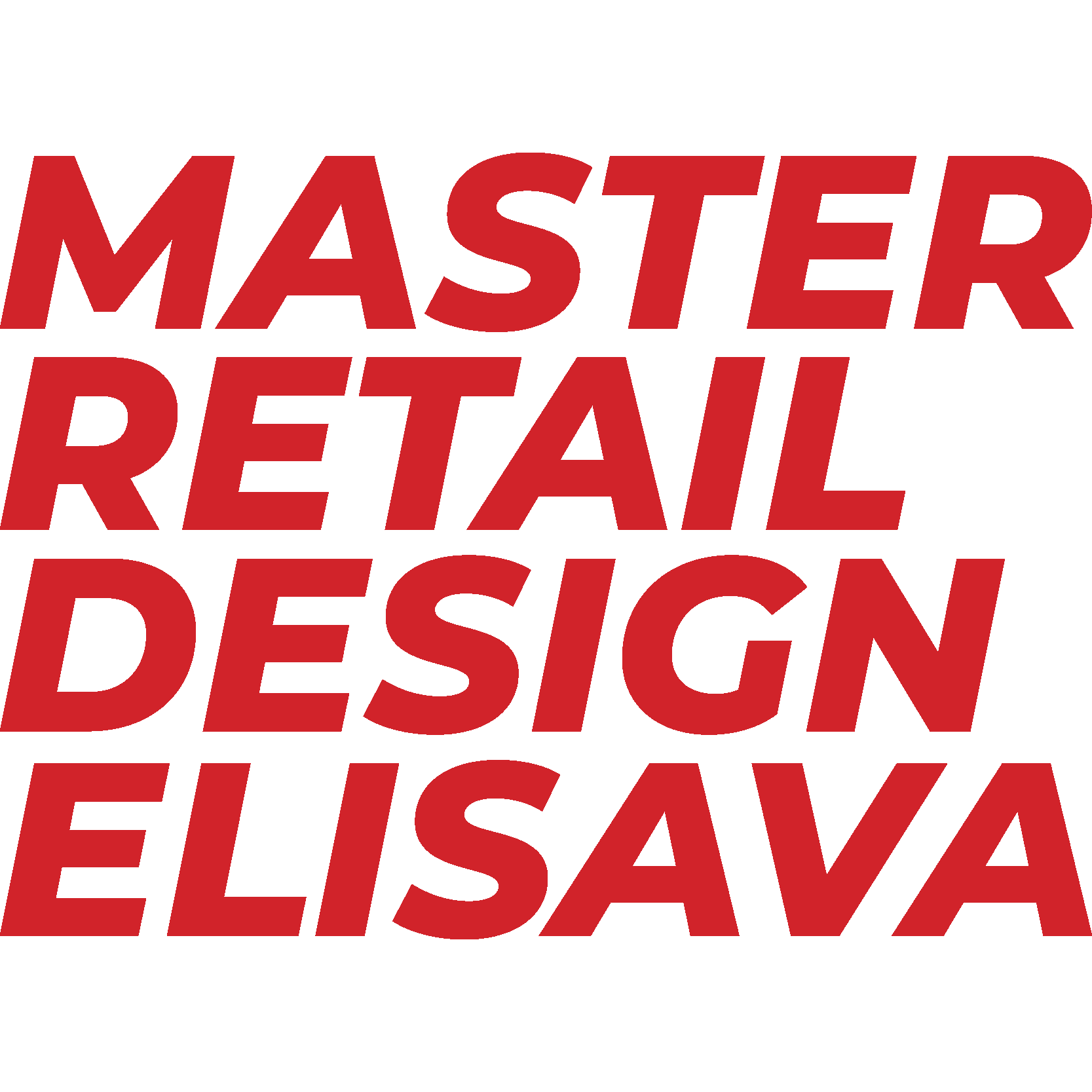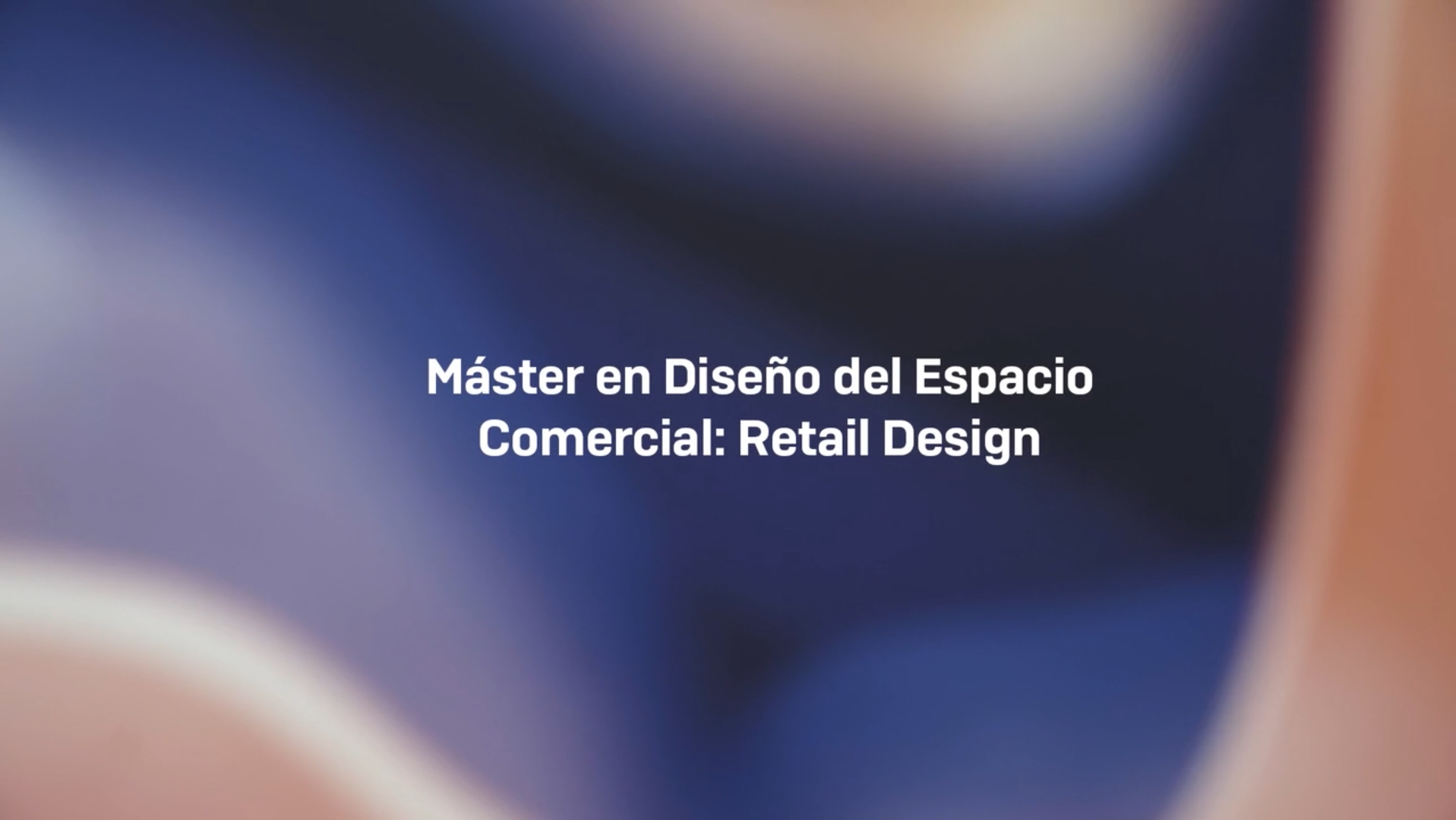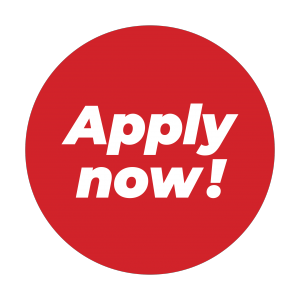About the program
“This master’s degree is designed for professionals who wish to acquire a complete knowledge on the field of retail design. However, within retail arena there are many disciplines we will cover you to in which you can develop with the utmost professionalism.”
Choose Between
3 Options
What you will learn:
Design and Concept: Branding
01 - Introduction To Marketing Theory / Retail Branding
- Marketing theory.
- Display of case studies.
- Group work: case studies (market comparisons by country, age, etc.).
02 - The Challenge Of Branding / New Technologies
- Introduction to the challenge of branding. A journey through the world of retail (introduction).
- New technologies: the transformation of consumption.
- The “tuning” phenomenon: customization (the self-factor). Discussion: association of elements and environments with consumer behavior.
- Group case study. Introduction to branding and its varieties.
- Types and strategies.
- Brand analysis.
Discussion: the process for analyzing branding strategies.
03 - Research Project
- Project presentation and development.
- Project development and scheduled field trip (Essapunt visit).
- Presentation of project ideas.
- Project implementation in the real showcase.
04 - Graphic Art / Brand Identity And Imagery
- Design as strategy.
- Analysis of the search process for retail iconography.
- Values and trends.
- Case studies.
05 - Field Trips
Field Trips
06 - Window-Dressing
- Visual merchandising / product display / Fixtures & Flow.
- The principles of visual merchandising.
- Marketing applied to social shopping behaviour. Tour Shopping.
- Product analysis and strategy.
- Case study and exercise: business analysis and product display research.
- Models: effective display techniques.
- Window-dressing.
- Window-dressing as a hook/attraction technique.
- States: the exchange.
- The dynamics of crossing: input-output, in-out.
- Exercise: how to capture a customer’s social profile
- The technique of window-dressing.
- Materials, lighting and technologies.
07 - Trends
- Market trends.
- New customers and customer segmentation.
08 - Commercial Design And Image. Brand / Project
- Project presentation and development.
- Project development and exhibition.
- Presentation and discussion of proposals.
- Lighting/materials.
– Introduction: choosing environments.
– Synergies: light-material.
– New lighting technologies and materials.
– The effect. Handling spaces (infographics, scenography).
– Group work discussion: analysis and selection of lighting and states for activity programs.
09 - Final Project: Hands-On Exercise with Partner Company
- The project has to cover all modules developed throughout the course.
- Project presentation.
- Development of brief in groups.
- Presentation of findings to the partner company.
- Conclusion.
Design and Space: Shopping
01 - Group Case Study. Strategic Branding
Course introduction and presentation.
A journey through the branding world in large spaces.
- Case studies.
- Practical group work: development of a branded product.
- Practical group work: background and steps for developing a product.
- Group discussion: relevant aspects discovered by the student while carrying out the hands-on project.
02 - Market Strategies And Plans / Expansion Models
Market strategies and plans.
– Basis and concepts that define the market.
– Market plans and strategies.
– Case studies: analysis of examples.
- Market “scales”.
- Trends and models.
- Practical discussion session: future markets.
03 - Concept Design and Showcase Implementation / Project with Partner Company
- Project presentation and development.
- Project development and scheduled field trip (Essapunt visit).
- Presentation of project ideas.
- Project implementation in the real showcase.
04 - E-Commerce / Communication Tools / Visual Communication
- Graphics and Impressions.
- Communication tools.
Visual communication.
- Commerce.
- E-Commerce.
- Web Commerce.
05 - Eco-Lighting
- Lighting.
- Ecology in lighting.
- Trends and models.
- Tools for using eco-lighting.
06 - Final Project
- Design and concept: how to stand out using marketing strategies.
- Layouts (circuits).
- Window-dressing.
- Visual Merchandising.
- Lighting in shopping centres.
- Graphic art and visual communication.
- Construction materials and techniques.
FAQ
How should we apply design to a commercial space?
From small-scale and new formats to large-scale design, from boutiques to large multinational brands, we will explain how the differences are applied in each scenario, working directly with brands and briefings and getting great guest juries. Our guest companies are among other World Duty Free, IKEA, Swarovski and Vitra, among others.
What should be taken into account when creating spaces for brands?
Most areas are covered with theory and practice cases. Importance is given to the analysis and study of trends and innovation in the market and society to get a close-up view of the elements in designing a retail space arena (new formats, space, communication, flow, exhibition, virtual aspects, sensory perceptions, etc.). Art and analysis are the basis of any project and the concept and projection of space. We make every effort so students come away with the highest standards and ability to work with the most demanding companies in the market.
What about the language of instruction?
For each Retail Program, there are two independent editions – English or Spanish.
What is the duration of the Program?
Two editions per year starting in September and February:
Spanish group:
Tuesday, Thursday and Friday, from 5 p.m. to 9.15 p.m.
English group:
Tuesday, Thursday and Friday, from 10 a.m. to 2.15 p.m.
How much does a university master's degree course cost?
Master in Retail Space: Retail Design
English Edition (Year 20/21):11.000 € (plus 450 € registration fee)
Spanish Edition (Year 20/21): 10.450 € (plus 450 € registration fee)
Postgraduate in Retail Design. Design and Concept: Branding
English Edition (Year 20/21): 6.050 € (plus 450 € registration fee)
Spanish Edition (Year 20/21): 5.540 € (plus 450 € registration fee)
Postgraduate in Retail Design. Design and Space: Shopping
English Edition (Year 20/21): 6.050 (plus 450 € registration fee)
Spanish Edition (Year 20/21): 5.540 € (plus 450 € registration fee)
What kinds of master's degree are there?
Upon successful completion of the Master programme:
Students get a Master’s Degree in Retail Space: Retail Design, awarded by Pompeu Fabra University (UPF) and ELISAVA Barcelona School of Design and Engineering.
Upon successful completion of the Postgraduate Diploma in Retail Design. Design and Concept: The Brand
Postgraduate Diploma in Retail Design. Design and Concept: The Brand, degree awarded by Pompeu Fabra University (UPF) and ELISAVA Barcelona School of Design and Engineering
Upon successful completion of the Postgraduate Diploma in Retail Design. Design and Space: Shopping:
Postgraduate Diploma in Retail Design. Design and Space: Shopping, degree awarded by Pompeu Fabra University (UPF) and ELISAVA Barcelona School of Design and Engineering.
What academic qualifications are required to study Retail Design at Elisava?
- Graduates in Design, Fine Arts, or Communication.
- High level of Spanish (for the Spanish version) and English (for the English version)
- Basic knowledge of spatial representation in 2D and 3D.





